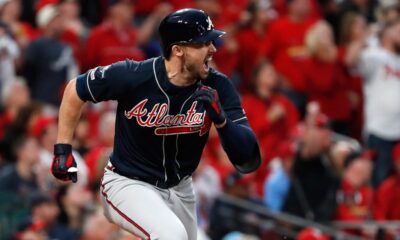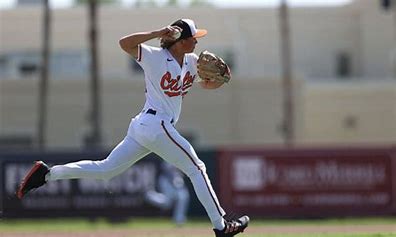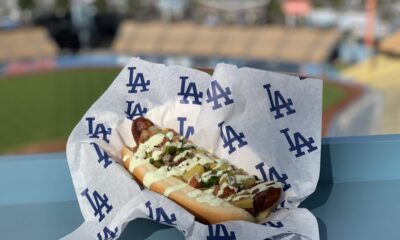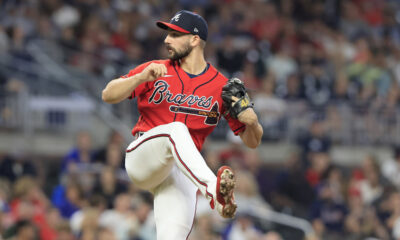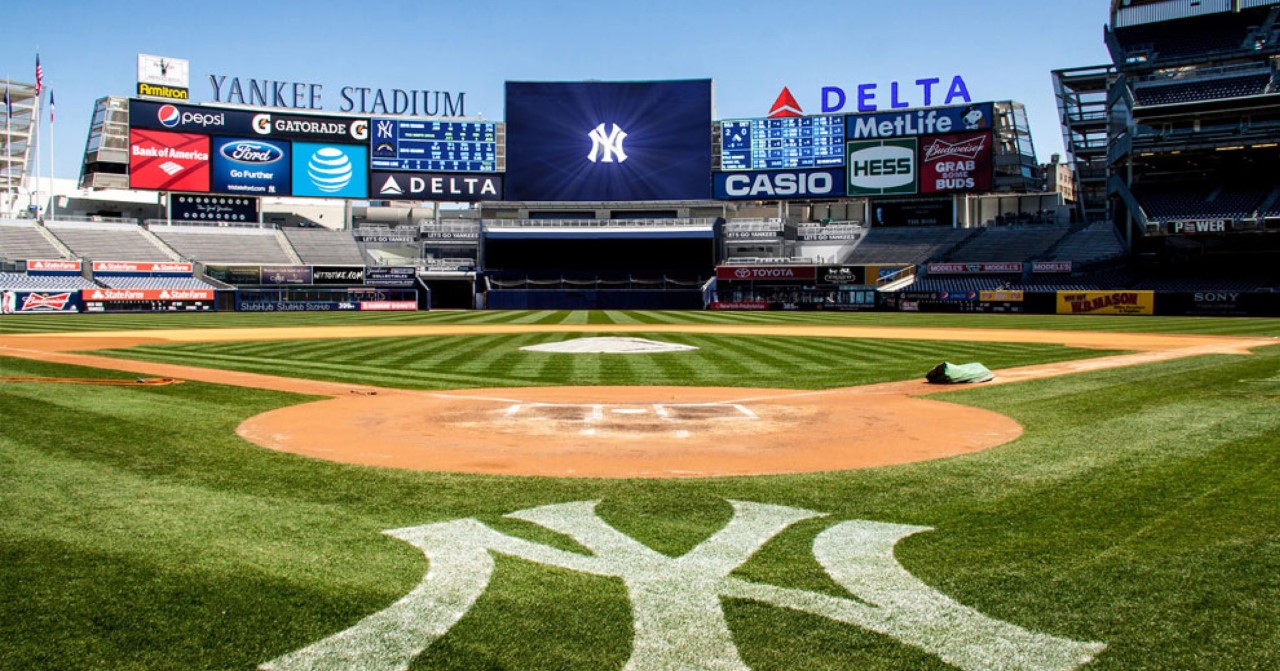
Note: There are some advanced stats, and terms that can be found in the key at the end of the article.
Each year the end of the Super Bowl unofficially represents the beginning of the new baseball season. Pitchers and catchers report by February 13th, and the first Yankee Spring Training game takes place against the Blue Jays on February 22th. Another exciting year for the Yankees is underway, and a wide variety of non-roster invitees are hoping to crack the 26-man Major League Roster. RHP Domingo Acevedo, LHP Luis Avilán, C Kellin Deglan, OF Zack Granite, RHP David Hale, INF/OF Rosell Herrera, C Chris Iannetta, C Erik Kratz, LHP Tyler Lyons, OF Thomas Milone, RHP Dan Otero, C Wynston Sawyer, C Josh Thole RHP Nick Tropeano, OF Trey Amburgey, 1B Chris Gittens, INF Kyle Holder, RHP Clarke Schmidt, and RHP Alexander Vizcaíno are the nineteen non-roster invitees. While the Yankees already have a talented, and packed roster they still need to determine who will take up the remaining bullpen spots, their backup catcher, and their last bench player. As a result, these non-invitee players will essentially be placed in three categories: pitchers, catchers, and infielders/outfielders.
Pitchers
RHP Domingo Acevedo: Acevedo earned a promotion to Triple-A in 2019, after spending most of the season in Trenton. He had a respectable season with the Thunder, as he pitched to a 3.86 ERA, and 8.49 K/9 in 35.2 IP. When Acevedo joined the Triple-A Scranton Wilkes-Barre Railriders, his strikeout rate increased to 11.34 K/9. However, the home run ball (2.16 HR/9), and high BABIP (.357) caused him to have a 5.40 ERA. Despite having a tough cup of coffee in Triple-A, Acevedo has an electric arm, even amongst relievers, and has a chance to join the Yankees at some point in 2020.
LHP Luis Avilán: The journeyman veteran has spent the eight years in the Major Leagues with the Atlanta Braves, Los Angeles Dodgers, Chicago White Sox, Philadelphia Phillies, and New York Mets, all the while pitching to a career 3.28 ERA, 8.08 K/9, and 1.25 WHIP. At various times, throughout his career, Avilán has been an effective lefty reliever out of the pen. Although Avilán can no longer be a LOOGY (a lefty specialist) any more thanks to the new three batter minimum rule, he still can be a productive option out of the ‘pen. However, Avilán needs to have a strong spring training, as he is looking to bounce back from a rough 2019 season where he had a 5.06 ERA, 4.96 FIP, 8.44 K/9, and 3.94 BB/9 in 30.2 IP with the Mets.
RHP David Hale: To some Yankee fans, Hale might be a pretty familiar name. He had a brief three-game stint with the Yankees in 2018, but then pitched in 20 games (37.2 IP) for the Yankees in 2019. While Hale will certainly not strike out relievers at a high rate (5.50 K/9 in 2019, and 5.91 K/9 in his MLB career), he found his groove last season thanks to his two-seam fastball. Hale’s two-seamer allowed him to have arguably his best season in the Majors as he pitched to a 3.11 ERA, 3.32 FIP, 50.0 GB%, 0.48 HR/9, and even a 0.7 fWAR. Watch out for Hale to be a big dark horse candidate to win the long reliever job out of Spring Training.
LHP Tyler Lyons: Lyons also spent time as a reliever in the Yankees 2019 bullpen after spending his entire career with the St. Louis Cardinals, and the Pittsburgh Pirates. In Lyons’ eleven game appearance as a Yankee, he flashed some potential from his 4.15 ERA, and 12.08 K/9. However, his 1.42 WHIP and 3.12 HR/9 raised some red flags about his effectiveness. That being said, Lyons has an outside chance to crack the roster if he can lower his home run and walk rates.
RHP Dan Otero: Otero might have the most highly touted career out of all the non-roster invitees. He has spent the last eight years in the Majors with the San Francisco Giants, Oakland A’s, and Cleveland Indians. At various times, Otero has been a very underrated reliever. Unfortunately for Otero, his last two seasons for the Indians saw him with an ERA above 4.80, an HR/9 over 1.80, and K/9 under 6.65. All of these statistics might be the new norm for Otero as he is now in his mid-thirties. However, a solid turnaround in Spring Training could net him a chance to crack the Yankees roster, in large part to his respectable Major League career.
RHP Nick Tropeano: Tropeano was seen by baseball analysts as somewhat of a dark horse option for the fifth starter role if the Yankees traded J.A. Happ. However, as Cashman announced that Happ will be the Yankees’ fifth starter as the season opens up, Tropeano will be fighting for the long relief position. Although he has the most Major League experience as a starter out of the non-roster invitees, he has not had consistent big league success since his 2015 season with the Los Angeles Angels. In 2019 alone, Tropeano had an alarming 9.88 ERA, 9.21 FIP, 3.95 HR/9, and -0.4 fWAR. Although a solid Spring Training could allow Tropeano to be on the big league roster, he is more likely to start the year in Triple-A.
RHP Clarke Schmidt: Schmidt may very well have the most potential out of all the pitchers among the non-roster invitees, and he is “only” in Double-A! Schmidt earned the promotion to Trenton after showing promise in the starter role in Single-A (63.1 IP, 3.84 ERA, 2.87 FIP, 9.81 K/9, 0.28 HR/9). Schmidt continued his dominance for the Thunder as he then pitched to a 2.37 ERA, 2.01 FIP, 9.00 K/9, and 0.47 BB/9. While Schmidt might be a year away from cracking the Yankees Major League roster, a strong Spring Training and first-half in Double-A could allow him to pitch in Triple-A before the season ends.
RHP Alexander Vizcaíno: At just 22 years of age, Vizcaíno is one of the younger, if not the youngest, non-roster invitees. The Yankees are grooming Vizcaíno to be a Major League starter and has not disappointed in Single-A. Vizcaíno showed a lot of promise last year as he had a 4.41 ERA, 3.31 FIP, and 10.37 K/9 in Single-A. Eventually, Vizcaíno moved to High-A and had a 4.28 ERA, 3.49 FIP, and 0.62 HR/9. An impressive Spring training and start to his High-A season could have Vizcaíno well on his way to Triple-A.
Catchers
Kellin Deglan: After spending the majority of his career in the Rangers organization, Deglan has quietly moved up the Yankees farm system since 2018. To add to his success, an impressive campaign in Double-A last season earned Deglan a brief stint with the Railriders. If he can replicate a strong bat with sneaky power (.768 OPS, .349 wOBA, 127 wRC+, .170 ISO in Double-A), he has a decent shot at earning the starting catcher position in Triple-A to open the 2020 season.
Chris Iannetta: Iannetta has had the longest Major League career out of the invitees. In his fourteen-year career, Ianetta has played for the Colorado Rockies, Los Angeles Angels, Seattle Mariners, and Arizona Diamondbacks. Although Father Time might be catching up to him as evident by his 2019 season (.222/.311//417, 70 wRC+, -7 DRS, -4.0 FRM, and 17.4 CS%), he posted positive defensive numbers and flashed double-digit pop as recently as 2018. As a result, Iannetta’s major league career may not be over just yet.
Erik Kratz: By signing a minor league contract with the Yankees, Kratz is making his second stint in the Yankees organization. Kratz, 39, has played with the Pittsburgh Pirates, Philadelphia Phillies, Toronto Blue Jays, Kansas City Royals, Houston Astros, Milwaukee Brewers, San Francisco Giants, Tampa Bay Rays, and New York Yankees. Although Kratz has spent a whopping 1027 games in the Minors, he is still regarded as a solid defensive catcher with sneaky pop. He had double-digit home runs in the Minors as recently as 2017, was on the Brewers 2018 NLCS roster, and posted a respectable 0.7 FRM last season in the Majors. Although the Yankees are looking for a catcher to handle upwards for 40 games in 2020, Kratz remains an intriguing option in large part because of his defense, and longevity in baseball.
Wynston Sawyer: After spending his entire career in the Baltimore Orioles, Los Angeles Dodgers, and Minnesota Twins’ farm systems, Sawyer has joined the Yankees on a Minor League deal. Although Sawyer might not replicate the double-digit power that he had in 2016, he had a .850 OPS as recently as 2018. Since there are a lot of Major League options available at the catching position, Sawyer is unlikely to make his first big league appearance for the Yankees but could begin the season in Triple-A for the Railriders.
Josh Thole: Thole has bounced around from the Mets, Blue Jays, Dodgers, and Angels before joining the Yankees as a non-roster invitee. Besides being a respectable defensive catcher, Thole is best known for being part of the very memorable R.A. Dickey and Noah Syndergaard trade. Although Thole has not cracked a big league roster since 2016, his framing ability (career 5.5 FRM) could at least allow him to stay in the Yankees organization and gives him somewhat of an outside chance at making the roster.
Infielders/Outfielders
OF Zack Granite: Granite had a forty game big-league appearance with the Twins in 2017, before moving on to the Rangers, and now the Yankees organization. Granite is speed and defense first outfielder. As evident by sabermetrics, he posted superb defensive metrics in the Majors (4 DRS, 1.1 UZR). On the basepaths, Granite stole 25 bags in Triple-A last season and had 56 steals as recently as 2016. Although Granite does not have a lot of power, he was right in line with his career .284 BA, and .344 OBP in the Minor Leagues last year. Since the Yankees have a plethora of big-league outfielders, Granite will likely start the season in Triple-A.
INF/OF Rosell Herrera: Herrera has the most Major League experience out of all the infielder and outfielder non-invitees. He spent the majority of the year last season with the Miami Marlins and posted a respectable walk rate (9.1 BB%). He also spent a large part of the season in Triple-A where slashed .309/.367/.479, and there is still time for his hitting to improve at the highest level. Besides having a decent bat, Herrera’s best attribute is his versatility. In his first two years in the Majors with the Cincinnati Reds, Kansas City Royals, and Miami Marlins, he has played every position except first base, catcher, and pitcher. Although Herrera may not have the same ceiling as Tyler Wade or Thairo Estrada, he has an outside shot at receiving the final bench spot.
OF Thomas Milone: Milone spent the entirety of his Minor League career in the Rays organization before signing a Minor League deal with the Yankees. Milone raked in Single-A this past season, posting a remarkable .309/.370/.485 slash line. Although his slash line dipped in Double-A, Milone still posted notable walk and strikeout ratios (12.5 BB%, and 19.8 K%). Milone is also a very effective baserunner, as he has continually had over 10+ steals throughout his career, and peaked at 26 stolen bases in 2016. If Milone can continue to translate his success in Double-A, he should be in Scranton by the end of the year.
OF Trey Amburgey: Amburgey has quietly turned himself into one of the better outfielders in the Yankees farm system. Amburgey socked 22 HRs, had a .274/.329/.494 slash line, 63 RBIs, and scored 73 Runs. 2019 was Amburgey’s best season in the Yankees organization, and he is showing that he has little left to prove in the Minor Leagues. Additionally, Amburgey has swiped 10+ bases in various seasons in his Minor League career and stole twelve bases as recently as 2018. An eye-catching Spring Training could certainly help Amburgey be a September callup for the Yankees.
1B Chris Gittens: Gittens might be the most underrated non-roster invitee for the Yankees. Gittens posted eye-popping numbers in Double-A last season, as he had 23 HRs, a .281/.393/.500 slash line, and a 14.9 BB% in 115 games. Although Gittens needs to cut down on his career 32.9 K% to reach the next level, Gittens should be able to make an appearance for the Yankees in Triple-A this season.
INF Kyle Holder: Holder is a former first-round draft pick for the Yankees back in 2015. He is regarded as one of the best defensive players in the Yankees farm system, and last season his bat started to catch up to his defensive prowess. Holder posted career highs in every category, and if he can harness his power-speed combo, he could have the potential to be a 15-15 player at the highest level. At the very least, he should be able to sustain his breakout performance from last season, as indicative of his .337 wOBA, and 119 wRC+. A head-turning Spring training, as well as a great beginning to his season in Double-A, could very well allow Holder to receive a promotion to Triple-A.
Key:
RHP/LHP: Right-handed pitcher/Left-Handed Pitcher
C: Catcher
INF/OF: Infielder/Outfielder
1B: First Base
Trenton Thunder: The Yankees Double-A Affiliate.
ERA: Earned Run Average. MLB average: 4.49 ERA
K/9: Average number of strikeouts in a nine-inning game. MLB average: 7.92 K/9
IP: Innings pitched
HR/9: Average number of homers allowed in a nine-inning game. MLB average: 1.26 HR/9
BABIP: Batted Balls in Play. The batting average of a hitter when the ball is put in play (every at-bat, except for strikeouts). MLB average: ~ .300 BABIP.
WHIP: Walks + Hits in Innings Pitched. MLB average: 1.19 WHIP.
FIP: Fielding Independent of Pitching. This stat is essentially a version of ERA that is more focused on what the pitcher can control (Walks, Home Runs, Strikeouts, Hit Batsmen). MLB average: ~4.50 FIP.
GB%: The percentage of balls in play that ends up as a ground ball. MLB average: ~44.0 %
fWAR: Wins Above Replacement for Fangraphs. For example, if a player has a 0.1 fWAR they are worth 0.1 wins more than a replacement-level player (0.0 fWAR).
BA(AVG)/OBP/SLG: An important measurement of a player’s ability to hit. Batting average is derived by the formula (Hits/At Bats), On Base Percentage is determined by the formula ((Hits+Walks+Hit By Pitches)/Plate Appearances), and Slugging Percentage can be found by the formula ((Singles+Doubles*2+Triples*3+Home Runs*4)/At Bats). MLB average: .252/.323/.435.
OPS: OBP + SLG. MLB average: .758 OPS.
wOBA: Weighted On Base Percentage. An offensive stat that is a truer version of OBP. MLB average: .320 wOBA.
wRC+: Weighted runs created plus. A stat that quantifies total offensive value and factors in the different dimensions of each ballpark. A wRC+ of 100 is replacement level, and anything above that is X% above league average (i.e. a wRC+ of 101 is 1% above league average offensively).
ISO: Isolated Power ((Doubles*1+Triples*2+Home Runs*3/At Bats)). MLB average: .183 ISO.
DRS: Defensive runs saved. A stat that has a number above 0 is above average, and a number below 0 is below average.
FRM: A defense measurements for catchers that show their framing ability (getting called strikes frequently and framing balls into strikes) 0 is average, greater than 0 is above average, and less than zero is below average.
CS%: The percentage of runners thrown out trying to steal a base. MLB average: 27.50 CS%.
NLCS: National League Championship Series.
Scranton Wilkes-Barre Railriders: The Yankees Triple-A Affiliate.
BB%: Walks/Plate Appearances. MLB average: 8.0%.
K%: Strikeouts/Plate Appearances. MLB average: 20.0%.
RBIs: Runs Batted In
Sources:
Related

Featured Articles
-
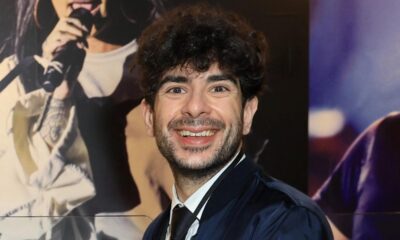

Uncategorized
/ 1 day agoA Misguided Misstep: AEW’s Backstage Blunder on Dynamite
In the realm of professional wrestling, storytelling is paramount. It’s a delicate dance between...
By Randy Zellea -
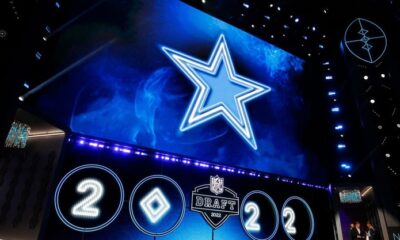

Features
/ 3 days agoWho should the Cowboys select in Round 1 of the 2024 NFL Draft?
This year’s 2024 draft is loaded with offensive tackle and wide receiver talent which...
-
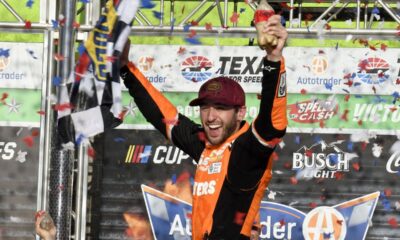

Features
/ 3 days agoA Texas Sized Victory for Chase Elliott
Here we go again, for the second time in four races, NASCAR is back...
By Jacob Barker -
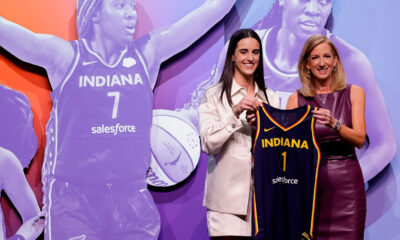

NCAA
/ 3 days agoTrinity’s 2024 Newsletter: 2024 WNBA Draft Recap
Outside of the assumption that Caitlin Clark would be picked first in the 2024...
By Trinity Rea
